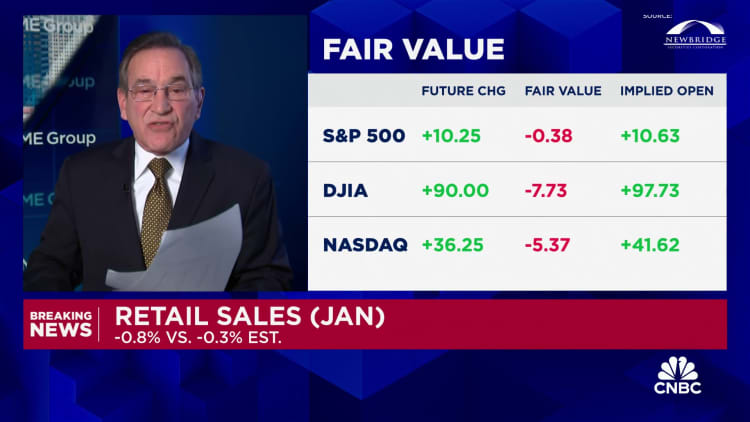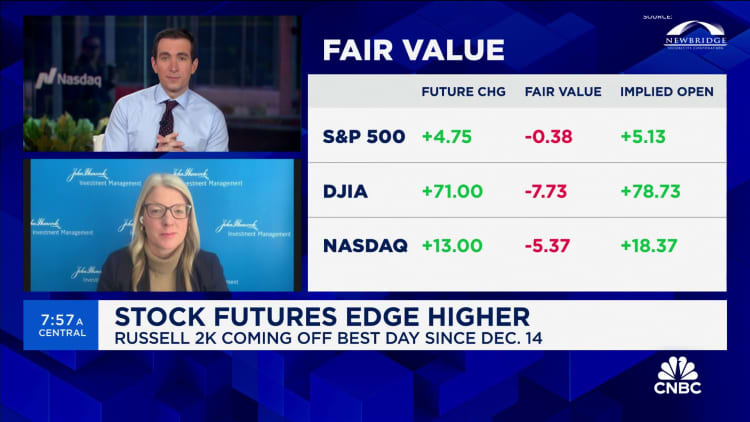Retail Sales Plunge in January 2024: A Troubling Sign for the Economy

Consumer spending took a sharp downturn in January, hinting at potential trouble ahead for the economy, according to a report released by the Commerce Department. In January, retail sales experienced a considerable decline of 0.8%, following a downwardly revised 0.4% gain in the previous month of December. Economists surveyed by Dow Jones had expected a more modest drop of 0.3%, accounting for seasonal distortions that likely boosted December’s figures. However, the decline was much greater than anticipated, with sales dropping 0.6% even when excluding automobile sales, well below the estimated 0.2% gain.
Slower Consumer Spending Raises Concerns
The report on retail sales, adjusted for seasonal factors but not for inflation, indicates that spending lags behind the pace of price increases. On a year-over-year basis, sales only saw a meager increase of 0.6%. In contrast, headline inflation rose 0.3% in January, with a 0.4% increase when excluding food and energy prices, according to the Labor Department. These inflation rates on a year-over-year basis stood at 3.1% and 3.9%, respectively.
Several sectors within the retail industry experienced significant declines. Sales at building materials and garden stores dropped by 4.1%, while miscellaneous store sales fell by 3%. Motor vehicle parts and retailers also saw a 1.7% decrease. Gas station sales declined by 1.7% as well, due to a drop in pump prices. On the positive side, restaurants and bars reported a 0.7% increase in sales.
The Importance of the Control Group
Of particular significance is the control group of retail sales, which excludes items such as food service, automobiles, gas, and building materials. This control group experienced a 0.4% decline. This figure plays a vital role in the calculation of the gross domestic product by the Commerce Department.

Consumer Strength and Economic Concerns
Consumer spending has been a key driver of U.S. economic growth, defying earlier predictions of a recession. In the fourth quarter of 2023, spending accelerated by 2.8%, contributing to a 2.5% rise in gross domestic product for the year. However, concerns remain regarding persistently high inflation and its potential impact on future prospects.
Robert Frick, corporate economist for Navy Federal Credit Union, noted that the weak retail sales report does not indicate a fundamental shift in consumer spending. He attributed the decline to factors such as the end of holiday shopping, frigid weather, and an unfavorable seasonal adjustment. Frick expressed confidence that consumer spending would still contribute to economic expansion, citing real wage gains and increasing employment.
A separate economic report revealed ongoing strength in the labor market, another crucial element for overall economic health. Initial claims for unemployment insurance fell to 212,000 for the week ending February 10, surpassing estimates. However, continuing claims rose by 30,000, slightly higher than anticipated.
Mixed Signals in Manufacturing
On the manufacturing front, regional surveys in the Federal Reserve’s Philadelphia and New York districts provided mixed signals in February, albeit with positive improvements. The Philadelphia survey indicated a reading of 5.2, surpassing expectations, while the Empire State survey for New York was at -2.4, an improvement compared to January’s figures. These surveys measure the share of companies reporting growth, with a positive reading indicating expansion.
The Fed and Monetary Policy
Market reactions to these reports were relatively muted, with stock futures pointing to a higher opening on Wall Street. Investors are closely monitoring the numbers for indications of the Federal Reserve’s future monetary policy decisions and interest rate adjustments.
Federal Reserve officials have expressed satisfaction with the prospects of falling inflation and steady economic growth. As a result, the rate-hiking cycle that began in March 2022 may be coming to an end. However, policymakers continue to closely observe the data, requiring further evidence of sustainable inflation levels before considering rate cuts.
Futures market pricing suggests that the first rate reduction may occur in June, with the possibility of a total of four rate cuts by the end of 2024, amounting to a full percentage point decrease.
For more information about the latest economic news and updates, visit Business Today. Stay informed about the current trends and developments that affect the economy and your financial decisions.

